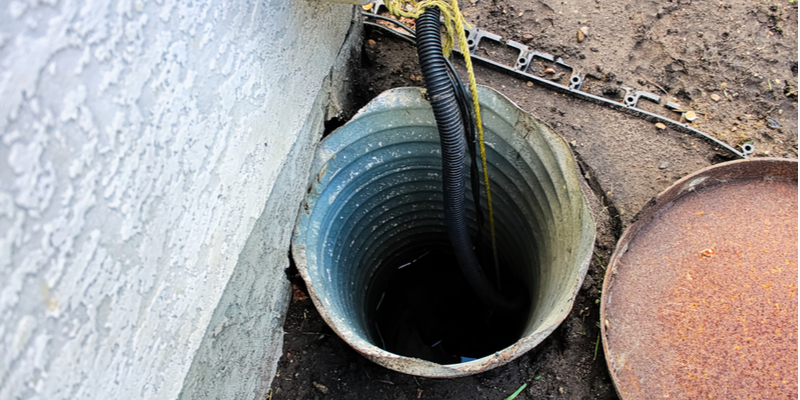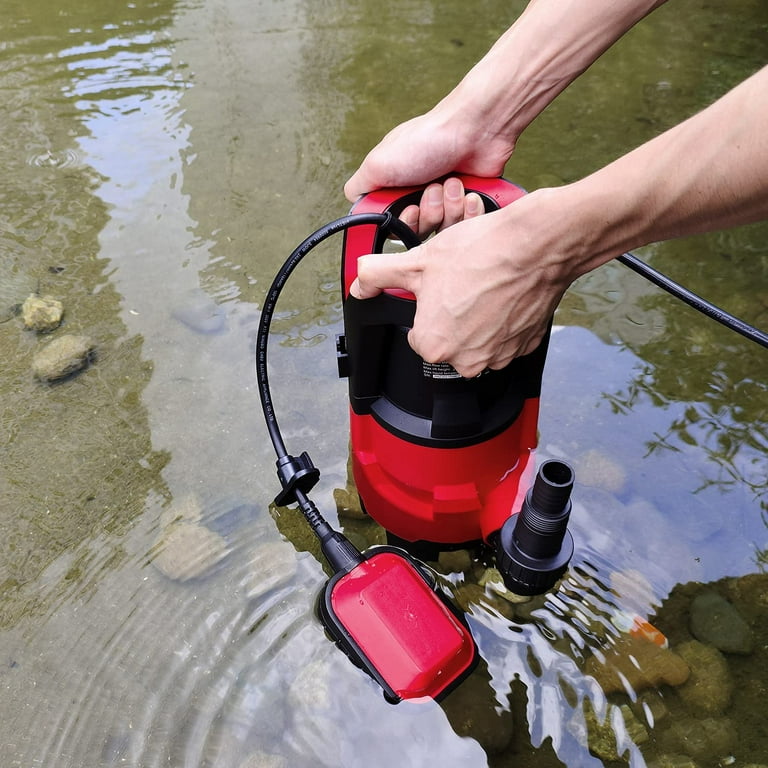The content in the next paragraphs relating to Keep Your Sump Pump Clean, It'll Keep You Dry is definitely interesting. You should investigate for yourself.

Sump pumps are crucial components in many homes, especially in locations prone to flooding or too much moisture. They aid stop water damages by effectively getting rid of excess water from cellars or crawl spaces. Nevertheless, like any other device, sump pumps call for normal upkeep to ensure they operate properly when required one of the most. Cleaning your sump pump is an important part of its maintenance, and understanding exactly how to do it effectively can conserve you from costly repair work and prospective calamities.
Intro
Preserving a clean sump pump is important for its proper performance and long life. Disregarding this essential task can lead to obstructions, breakdowns, and inevitably, water damage to your home. As a result, discovering just how to clean up a sump pump is vital for property owners that count on these devices to keep their basements completely dry and safeguarded.
Signs of a Dirty Sump Pump
Recognizing when your sump pump needs cleaning is essential for preventing prospective breakdowns. Some typical indications that show an unclean sump pump consist of weird sounds throughout procedure, reduced water flow, and visible particles in the pit. If you discover any of these signs, it's vital to cleanse your sump pump without delay to stay clear of any type of further concerns.
Getting ready for Cleansing
Prior to you begin cleansing your sump pump, it's important to take some safety precautions. Start by turning off the power to the pump to stay clear of any kind of electrical crashes. In addition, use ideal protective equipment, such as gloves and safety glasses, to shield on your own from dirt, particles, and prospective microorganisms.
Comprehending the Sump Pump
Before diving into the cleaning procedure, it's necessary to have a fundamental understanding of exactly how a sump pump works. Commonly mounted in a pit or basin below the cellar floor, a sump pump contains a number of essential components, including a pump, a float button, and a discharge pipeline. When water gathers in the pit, the float switch triggers the pump, which after that pumps the water out with the discharge pipeline, far from the building's structure.
Detailed Overview to Cleaning a Sump Pump
Shutting Off the Power
Begin by detaching the power supply to the sump pump to prevent any type of crashes while cleansing.
Looking For Proper Functioning
Before re-installing the pump, perform a fast test to make sure that the float button turns on the pump properly. Pour some water into the sump pit and observe the pump's operation. If every little thing is operating properly, you can reassemble the pump and reconnect the power supply.
Eliminating Debris and Dirt
Use a bucket or a scoop to get rid of any type of visible debris, dust, or debris from the sump pit. Dispose of the debris properly to stop it from clogging the pump or the discharge pipe.
Cleansing the Pump and Float Switch
Once the pit is free from particles, carefully get rid of the pump from the pit. Examine the pump and the float switch for any signs of damage or wear. Utilize a soft brush or towel to clean the surface areas and remove any gathered crud.
Purging the System
After cleaning the pump and float button, flush the sump pit with clean water to remove any staying dust or sediment. This will aid ensure that the pump operates efficiently and efficiently.
Upkeep Tips to Keep Your Sump Pump Clean
In addition to routine cleaning, there are a number of maintenance tips you can comply with to maintain your sump pump in optimal condition:
Final thought
Cleaning your sump pump is an essential element of its maintenance and guarantees that it runs effectively when you require it the most. By complying with the actions described in this guide and including routine upkeep into your routine, you can expand the life-span of your sump pump and safeguard your home from water damage.
6 STEPS ON HOW TO CLEAN A SUMP PUMP PROPERLY
UNDERSTANDING SUMP PUMPS
Your sump pump plays a crucial role in protecting your home by managing and removing excess water. It primarily functions as a “shield”, guarding your basement against the damaging effects of water accumulation. The pump is housed in a sump pit in the lowest part of your basement, and its job is to pump out any water that collects there.
During heavy rainfalls or when snow melts rapidly, water can infiltrate your basement, posing potential risks like flooding, structural damage, and harmful mold growth. Here, the sump pump springs into action, pumping out the intruding water and directing it away from your home.
SAFETY FIRST
Before cleaning, remember to prioritize safety. Disconnect the sump pump from the power source to prevent any accidental electric shocks. Also, wear sturdy gloves to protect your hands from any sharp or dirty components within the pump.
REMOVE THE SUMP PUMP
After ensuring your safety, the next step is to remove the sump pump from its pit. Doing this might require careful maneuvering as you don’t want to damage any pump components. Once removed, clean the sump pit to remove any accumulated debris or sludge.
INSPECT THE PUMP
Inspect the pump for any visible signs of wear or damage. Check the power cord, float switch, and impeller housing. If any components look worn out or damaged, consider replacing them to ensure optimal performance.
CLEAN THE PUMP
Thoroughly clean the pump with warm, soapy water. Make sure to rid it of any dirt, gravel, or other debris that might impede its performance. You can use a toothbrush to clean the small, hard-to-reach parts of the pump.
REINSTALL THE SUMP PUMP
Reinstall the pump into the sump pit Make sure it’s positioned correctly to remove the water effectively Once it’s back in place, reconnect it to the power source TEST THE PUMP
Finally, pour some water into the pit to ensure the pump works correctly. It should start automatically and begin pumping out the water; if it doesn’t, check the power source and the positioning of the pump.
Remember, while cleaning your sump pump is an essential part of home maintenance, hiring a professional plumber for a thorough inspection and cleaning at least once a year is also important. This will ensure that your pump is in optimal condition, ready to protect your home from potential water damage.
BEST PRACTICES FOR CLEANING SUMP PUMP DISCHARGE PIPES
Regular Inspection: Regularly inspect your discharge pipes, especially during heavy rainfall or snowmelt periods. Look for any signs of blockage or damage. Early detection of problems can prevent serious issues down the line. Periodic Cleaning: Over time, sediment and debris can accumulate in the discharge pipes, impeding the flow of water. Regular cleaning helps keep the pipes clear and functioning efficiently. You can use a high-pressure water jet to effectively clean the pipes. Insulation During Winter: In colder climates, discharge pipes can freeze, blocking the outflow of water. Protect your discharge pipes from freezing temperatures by insulating them with foam pipe insulation. This will ensure the sump pump can continue to discharge water even in freezing conditions. Proper Positioning: The discharge pipe should be positioned to direct water away from your home’s foundation. Improper positioning can lead to water seeping back into the basement. Ensure the pipe is long enough and angled correctly. Installation of a Check Valve: A check valve prevents water from flowing back into your sump pit after the pump has pushed it out. Installing a check valve helps maintain the efficiency of your sump pump and reduces the risk of flooding. Minimize Pipe Turns: Every curve or turn in the discharge pipe can decrease the efficiency of water flow. By minimizing turns and bends in your discharge pipe, you can increase the efficiency of your sump pump. https://www.fullspeedplumbing.com/how-to-clean-a-sump-pump-properly9999/

Do you like reading about Cleaning & Maintenance Tips for Your Home's Sump Pump? Leave a short review further down. We will be happy to hear your responses about this blog posting. We are looking forward that you visit us again later on. Do you know about another person who is excited by the topic? Take a moment to share it. I truly appreciate your readership.
Quote